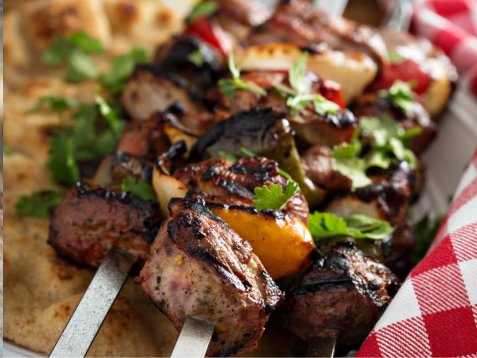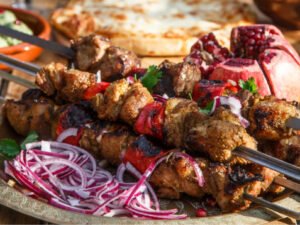The Middle East is home to some of the world’s most vibrant and aromatic spices, which are the backbone of its cuisine. From the rich, smoky undertones of baharat to the floral notes of cardamom, these spices create dishes that are as memorable as they are delicious.
Essential Spices in Middle Eastern Cooking
🌿 Za’atar – A fragrant blend of thyme, sumac, sesame seeds, and salt, used for seasoning meats, breads, and salads.
🌶 Aleppo Pepper – A slightly sweet, mild chili flake often used in marinades and stews.
🧂 Sumac – A tangy, citrusy spice that enhances grilled meats, salads, and rice dishes.
🥄 Baharat – A warm spice mix of black pepper, cinnamon, cumin, coriander, and cloves, used in everything from kebabs to rice.
🟠 Turmeric – Adds both color and earthy depth to dishes like Persian tahdig or Lebanese chicken and rice.
Middle Eastern Dishes That Showcase These Spices
-
Shakshuka – Eggs poached in a spiced tomato and pepper sauce, often seasoned with cumin and paprika.
-
Kibbeh – A mixture of bulgur, minced onions, and ground meat, flavored with cinnamon and allspice, then fried or baked.
-
Mansaf – Jordan’s national dish, featuring lamb cooked in a fermented yogurt sauce, served over rice and flatbread.
-
Persian Tahdig – A crispy saffron-infused rice dish that is golden and crunchy on the bottom.
-
Baklava – Layers of phyllo pastry filled with nuts and sweetened with honey or syrup, often flavored with cardamom and rose water.
Why Spices Matter
Middle Eastern cuisine wouldn’t be the same without its bold and aromatic spice combinations. Each region has its own variations, showcasing centuries of trade, migration, and cultural exchange. Whether it’s the heat of Moroccan harissa or the delicate balance of Iranian saffron rice, these spices tell the story of the Middle East through flavor.


